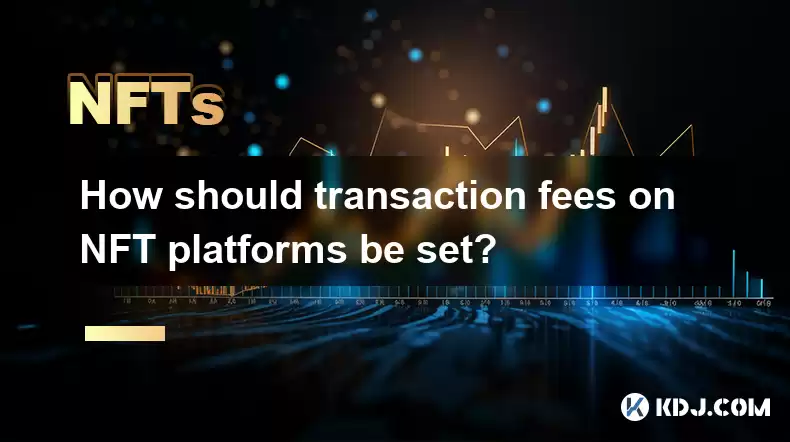-
 Bitcoin
Bitcoin $113900
-1.39% -
 Ethereum
Ethereum $3517
-4.15% -
 XRP
XRP $3.009
1.59% -
 Tether USDt
Tether USDt $0.9997
-0.04% -
 BNB
BNB $766.8
-1.41% -
 Solana
Solana $164.6
-2.38% -
 USDC
USDC $0.9998
-0.02% -
 TRON
TRON $0.3277
0.65% -
 Dogecoin
Dogecoin $0.2023
-1.67% -
 Cardano
Cardano $0.7246
0.05% -
 Hyperliquid
Hyperliquid $38.27
-4.77% -
 Sui
Sui $3.528
-0.52% -
 Stellar
Stellar $0.3890
-0.73% -
 Chainlink
Chainlink $16.16
-2.69% -
 Bitcoin Cash
Bitcoin Cash $539.9
-4.38% -
 Hedera
Hedera $0.2425
-2.00% -
 Avalanche
Avalanche $21.71
-0.97% -
 Toncoin
Toncoin $3.662
5.73% -
 Ethena USDe
Ethena USDe $1.000
-0.02% -
 UNUS SED LEO
UNUS SED LEO $8.964
0.35% -
 Litecoin
Litecoin $107.7
2.33% -
 Shiba Inu
Shiba Inu $0.00001223
-0.40% -
 Polkadot
Polkadot $3.617
-0.97% -
 Uniswap
Uniswap $9.052
-2.49% -
 Monero
Monero $295.1
-3.79% -
 Dai
Dai $0.9999
0.00% -
 Bitget Token
Bitget Token $4.315
-1.85% -
 Pepe
Pepe $0.00001060
0.11% -
 Cronos
Cronos $0.1342
-2.72% -
 Aave
Aave $256.0
-0.87%
How should transaction fees on NFT platforms be set?
Transaction fees on NFT platforms impact revenue and user experience; setting them involves balancing platform costs, market competitiveness, and user expectations.
Apr 20, 2025 at 08:29 pm

The setting of transaction fees on NFT platforms is a crucial aspect that influences both the platform's revenue and user experience. Transaction fees are the charges imposed on users for minting, buying, or selling NFTs on a platform. These fees are typically a percentage of the transaction value and can vary widely between different platforms. Understanding how to set these fees effectively involves considering various factors such as platform costs, market competitiveness, and user expectations.
Factors Influencing Transaction Fee Setting
Several key factors should be considered when setting transaction fees on NFT platforms. Platform operational costs are a primary consideration. These include the costs of maintaining the platform's infrastructure, such as server costs, development, and customer support. Additionally, blockchain network fees must be factored in, as they can fluctuate and directly impact the cost of transactions on the platform.
Another critical factor is market competitiveness. NFT platforms operate in a highly competitive environment, and setting fees too high can drive users to alternative platforms with lower fees. Conversely, setting fees too low may not generate sufficient revenue to sustain the platform. Therefore, a careful balance must be struck to ensure the platform remains attractive to users while generating enough income.
User expectations also play a significant role in setting transaction fees. Users are more likely to engage with a platform if they perceive the fees as fair and reasonable. This perception can be influenced by the platform's reputation, the value it provides, and how its fees compare to those of other platforms.
Types of Transaction Fees
NFT platforms typically employ different types of transaction fees, each serving a specific purpose. Minting fees are charged when an NFT is created on the platform. These fees cover the costs associated with adding the NFT to the blockchain. Selling fees are applied when an NFT is sold on the platform, often as a percentage of the sale price. These fees contribute to the platform's revenue and can vary depending on the platform's policies.
Additionally, royalty fees are a unique feature of NFT platforms, allowing creators to earn a percentage of the sale price each time their NFT is resold. This incentivizes creators to continue using the platform and can enhance its attractiveness to artists and collectors.
Setting Competitive Transaction Fees
To set competitive transaction fees, NFT platforms must conduct thorough market research to understand the fee structures of competing platforms. Analyzing competitor fees can provide valuable insights into what users are willing to pay and what fees are considered standard within the industry. This analysis should include both direct competitors and platforms in related markets.
Adjusting fees based on user feedback is another important strategy. Platforms can gather feedback through surveys, user forums, and direct communication to understand how users perceive the current fee structure. If users consistently express dissatisfaction with high fees, the platform may need to consider lowering them to retain and attract users.
Dynamic fee structures can also be implemented to adapt to changing market conditions. For example, a platform might offer lower fees during periods of low activity to encourage more transactions or adjust fees based on the value of the NFTs being traded. This flexibility can help the platform remain competitive and responsive to user needs.
Balancing Revenue and User Experience
Balancing revenue generation with user experience is a delicate task for NFT platforms. Revenue maximization is important for the platform's sustainability, but it should not come at the expense of user satisfaction. High fees can deter users from engaging with the platform, leading to reduced activity and lower overall revenue.
To achieve this balance, platforms can consider tiered fee structures. For instance, offering lower fees for smaller transactions can encourage more users to participate, while higher fees for larger transactions can still generate significant revenue. This approach can cater to a wider range of users and increase overall platform activity.
Transparency is also crucial in maintaining a positive user experience. Platforms should clearly communicate their fee structures to users, ensuring that there are no hidden fees or unexpected charges. This transparency builds trust and can lead to higher user retention and satisfaction.
Implementing Transaction Fees on NFT Platforms
Implementing transaction fees on an NFT platform involves several steps. Here is a detailed guide on how to set up and manage transaction fees:
Define the Fee Structure: Determine the types of fees (minting, selling, royalties) and their respective rates. Consider the factors discussed earlier, such as platform costs and market competitiveness.
Integrate Fee Logic into the Platform: Work with developers to integrate the fee logic into the platform's codebase. This involves setting up smart contracts on the blockchain to handle fee calculations and distribution.
Test the Fee System: Before launching the fee system, thoroughly test it to ensure that fees are calculated correctly and that users are charged appropriately. This testing should include various scenarios to cover different types of transactions and fee structures.
Launch and Monitor: Once the fee system is live, closely monitor its performance and user feedback. Use analytics tools to track transaction volumes, fee revenue, and user engagement.
Adjust as Needed: Based on the monitoring and feedback, make adjustments to the fee structure as necessary. This might involve changing fee rates, introducing new types of fees, or modifying existing ones to better meet user needs and market conditions.
FAQs
Q: How do transaction fees affect the value of NFTs on a platform?
A: Transaction fees can influence the perceived value of NFTs by affecting the overall cost of buying, selling, and owning them. High fees can make NFTs more expensive to trade, potentially reducing their attractiveness to buyers and collectors. Conversely, lower fees can increase the liquidity and accessibility of NFTs, potentially enhancing their value.
Q: Can NFT platforms waive transaction fees for certain users or transactions?
A: Yes, some NFT platforms offer fee waivers or discounts for specific users or transactions. This can be part of promotional campaigns, loyalty programs, or special events. Waiving fees can attract more users and increase platform activity, but it must be carefully managed to ensure it does not negatively impact the platform's revenue.
Q: How do royalty fees impact the long-term earnings of NFT creators?
A: Royalty fees allow NFT creators to earn a percentage of the sale price each time their NFT is resold. This can significantly increase their long-term earnings, as they continue to benefit from the increasing value of their work over time. Royalty fees provide a steady income stream and can incentivize creators to produce high-quality NFTs.
Q: What are the potential risks of setting transaction fees too low on an NFT platform?
A: Setting transaction fees too low can lead to several risks. Firstly, it may not generate enough revenue to cover the platform's operational costs, potentially leading to financial instability. Secondly, it can attract users who engage in low-value transactions, which may not contribute significantly to the platform's overall revenue. Finally, extremely low fees might be perceived as a sign of lower quality or less value, potentially damaging the platform's reputation.
Disclaimer:info@kdj.com
The information provided is not trading advice. kdj.com does not assume any responsibility for any investments made based on the information provided in this article. Cryptocurrencies are highly volatile and it is highly recommended that you invest with caution after thorough research!
If you believe that the content used on this website infringes your copyright, please contact us immediately (info@kdj.com) and we will delete it promptly.
- Solana, Axiom Exchange, and Revenue: Navigating the Future of DeFi
- 2025-08-02 12:50:12
- Cardano (ADA) and Altcoin Gains: Navigating the Crypto Landscape
- 2025-08-02 12:55:11
- Bitcoin's Bearish Momentum: Fakeout or the Real Deal?
- 2025-08-02 12:30:12
- Ethereum's Rocky Climb: Analysts Eye New ATH Despite Recent Dip
- 2025-08-02 10:30:11
- Ethereum Price, ETF Inflows, and ETH Tokens: What's Driving the Market?
- 2025-08-02 10:50:12
- Ethereum, ADA, and Price Support: What's Next for These Crypto Titans?
- 2025-08-02 10:50:12
Related knowledge

Is it possible to get a refund on an NFT?
Jul 21,2025 at 08:35pm
Understanding NFT Transactions and RefundsWhen you purchase an NFT (Non-Fungible Token), the transaction is typically recorded on a blockchain, making...

What happens to NFTs when the owner dies?
Jul 22,2025 at 02:43pm
Legal Ownership and Digital AssetsWhen an individual owns NFTs, the question of what happens to these assets upon their death is a pressing one. NFTs ...

What are the tax implications of gifting an NFT?
Jul 19,2025 at 04:21am
Understanding the Basics of NFT GiftingGifting a Non-Fungible Token (NFT) involves transferring ownership from one individual to another without recei...

Can you trade NFTs on your phone?
Jul 18,2025 at 04:29am
Trading NFTs on Mobile DevicesYes, you can trade NFTs on your phone, and the process has become increasingly streamlined thanks to a variety of mobile...

How to find out about upcoming NFT mints?
Jul 18,2025 at 11:50am
Exploring NFT Minting OpportunitiesUnderstanding the landscape of upcoming NFT mints is crucial for collectors, investors, and creators who wish to st...

What is an allowlist or whitelist for an NFT mint?
Jul 20,2025 at 07:14pm
Understanding the Concept of an Allowlist for NFT MintingAn allowlist, also commonly referred to as a whitelist, is a mechanism used in the NFT mintin...

Is it possible to get a refund on an NFT?
Jul 21,2025 at 08:35pm
Understanding NFT Transactions and RefundsWhen you purchase an NFT (Non-Fungible Token), the transaction is typically recorded on a blockchain, making...

What happens to NFTs when the owner dies?
Jul 22,2025 at 02:43pm
Legal Ownership and Digital AssetsWhen an individual owns NFTs, the question of what happens to these assets upon their death is a pressing one. NFTs ...

What are the tax implications of gifting an NFT?
Jul 19,2025 at 04:21am
Understanding the Basics of NFT GiftingGifting a Non-Fungible Token (NFT) involves transferring ownership from one individual to another without recei...

Can you trade NFTs on your phone?
Jul 18,2025 at 04:29am
Trading NFTs on Mobile DevicesYes, you can trade NFTs on your phone, and the process has become increasingly streamlined thanks to a variety of mobile...

How to find out about upcoming NFT mints?
Jul 18,2025 at 11:50am
Exploring NFT Minting OpportunitiesUnderstanding the landscape of upcoming NFT mints is crucial for collectors, investors, and creators who wish to st...

What is an allowlist or whitelist for an NFT mint?
Jul 20,2025 at 07:14pm
Understanding the Concept of an Allowlist for NFT MintingAn allowlist, also commonly referred to as a whitelist, is a mechanism used in the NFT mintin...
See all articles

























































































